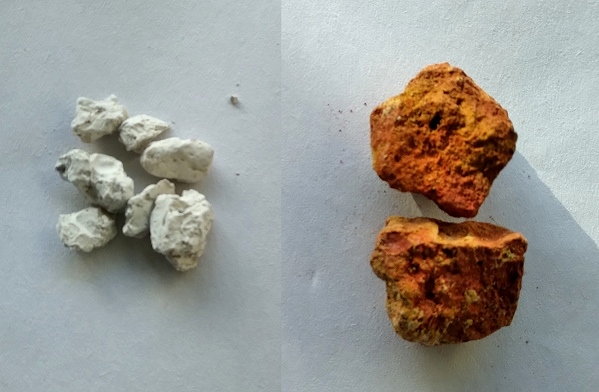
Did some #ceramic prep work today I'd been putting off. We have some white clay & red ochre that I needed to process for natural slips & paints to apply to our #ceramics. I by no means processed as much as I'd like, but it was a start. 1/ #archaeology #pottery 

The white clay, 1 of 2 we've found in the past few years, isn't ideal, having some small quartz & chert pea gravel, grit & course sand in it. I selected several small pieces after breaking up the main mass. 2/ #ceramics #archaeology #pottery 

The clay crushed nicely, except for the screeeech! of quartz grit dragging across the grinding stone surface. I picked out most of the grit & sand, but it will need sieved. The entire batch probably should be liquefied, then drain off the clay. 3/ #ceramics #archaeology #pottery 

Next came the red ochre (with a little yellow, too). There was a lot of red ochre nodules in the load of red clay we got after Hurricane Ida. 4/ #ceramics #archaeology #pottery 

Initial crushing showed that some areas of the ochre lumps were a lot harder than others. These took careful pounding with the end of my hammerstone, rather than the normal rocking back & forth. 5/ #ceramics #archaeology #pottery 

More work than I anticipated on both the white & red, but that's often the case. 6/ #ceramics #archaeology #pottery 

Not a bad yield for 3 ochre lumps. Mixed with a little base clay & applied as a slip or paint, this with fire out a nice orange-red to dark red. I would have processed more, but the evening breezy picked up! 7/ #ceramics #archaeology #pottery 

The slip clays will be used for decorations such as this Nodena Red-&-White bottle or this Southwest-style bottle. On these, the slips are rubbed with a smoothing stone to merge them with the moist clay body. 8/ #ceramics #archaeology #pottery 



• • •
Missing some Tweet in this thread? You can try to
force a refresh





